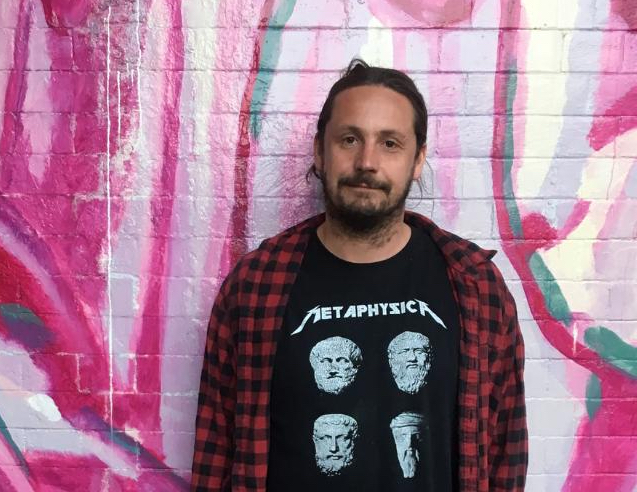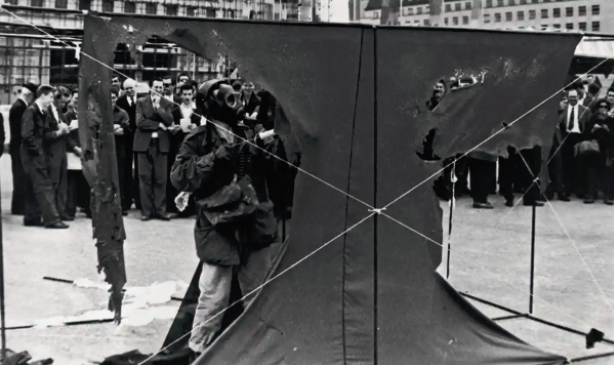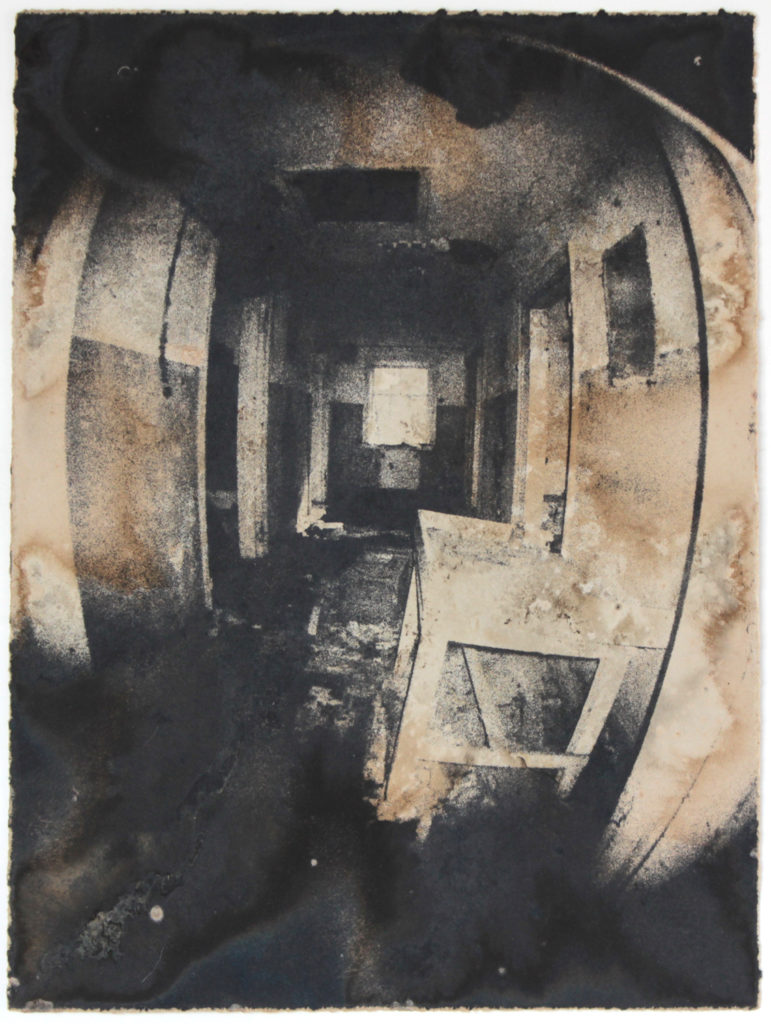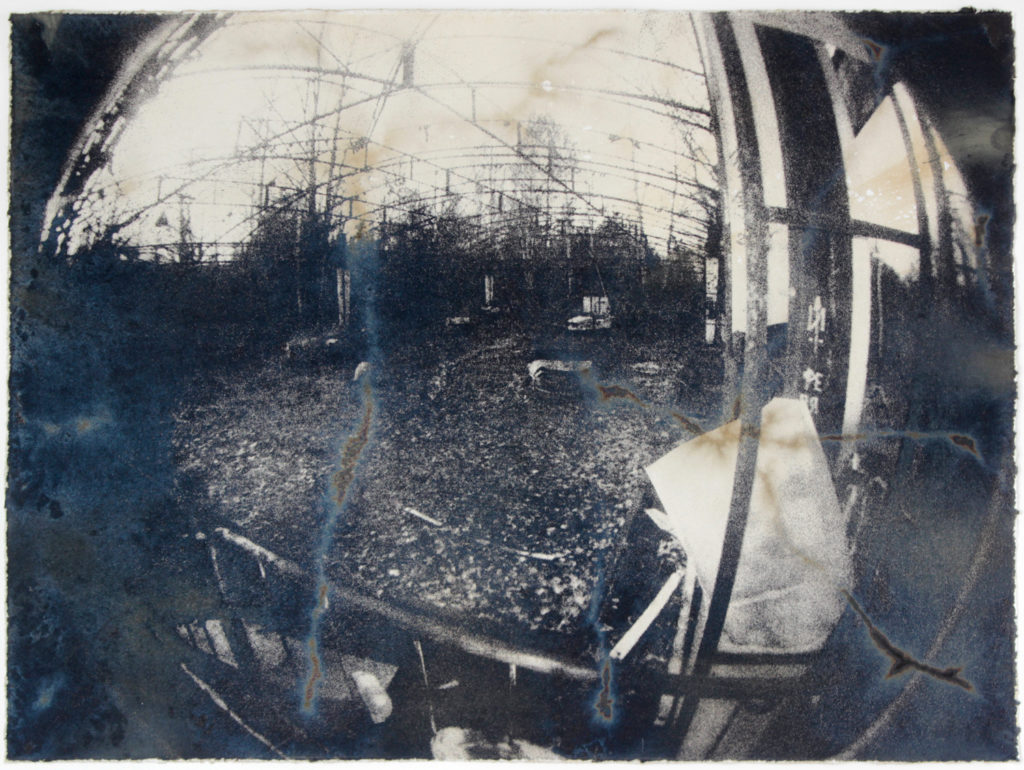Adam Hogarth has an ongoing interest in lines between creativity and destruction, popular culture and dialogue. While his practice ranges widely, from film to sculpture, print is his specialism. He is currently print-making fellow at the Royal Academy of Arts, London. Adam is open about his likes and influences. He has playful ones, such as skateboards, horror films and sweets. But also he gains much from specific films, writings, other art-works. However, one formative influence is absolutely key to a lot that has followed in his work. Early in his career, he became an admirer of Gustav Metzger’s Auto-destructive art project.
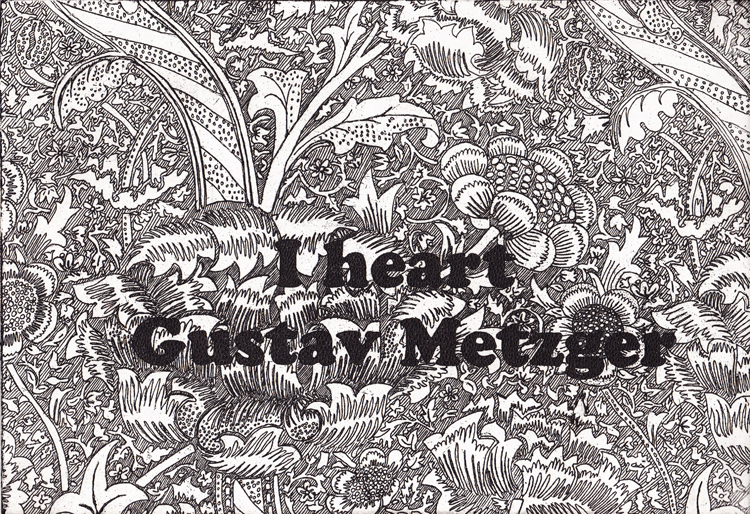
Gustav Metzger ( 1926-2017) had a complex background as a Jewish refugee from Nazi Germany. Originally a painter, he made a work in 1960 which deliberately auto-destructed through an acid-pour (see below). He did this as a public demonstration, an anti-consumerist protest challenging an over commercial art world. “Destroy and you create’ is his often-quoted saying.
Metzger was equally making philosophical statements about a world itself in a state of destruction.
From auto-destruction to environmentalism
From 2014, Adam created his own auto-destructive prints, using acid to remove photographic emulsion. However, his interest has gradually become more deeply ethical, turning more to Metzger’s model as a committed environmentalist.
Increasingly he is actively pursuing an environmental vision. It does however, still follow on from his auto-destructive interests, both in subject matter and his treatment of imagery.
The Future’s Forgotten Rituals
Currently Adam Hogarth is researching the actual destructive effects of nuclear power. He is projecting his vision to an era in the future, when the world has drastically changed through nuclear fall-out. He calls the project, ‘The Future’s Forgotten Rituals’. His research concerns the cultural and environmental impact of the post-nuclear legacy.
This work documents a series of fictitious folk communities that hang onto life 900 years after a global mass extinction. A worldwide nuclear meltdown and environmental disaster have regressed humanity into a new dark age. Sea levels have risen catastrophically, many animal species are extinct and much of the land is poisoned. Humans hang onto life, collecting photographs and artifacts dug up from the ground. Regarded as “Sacred Objects”, humans use them to perform masked rituals and ceremonies. These echo a naïve vision of a way of life that was lost through nuclear disaster.
Adam Hogarth
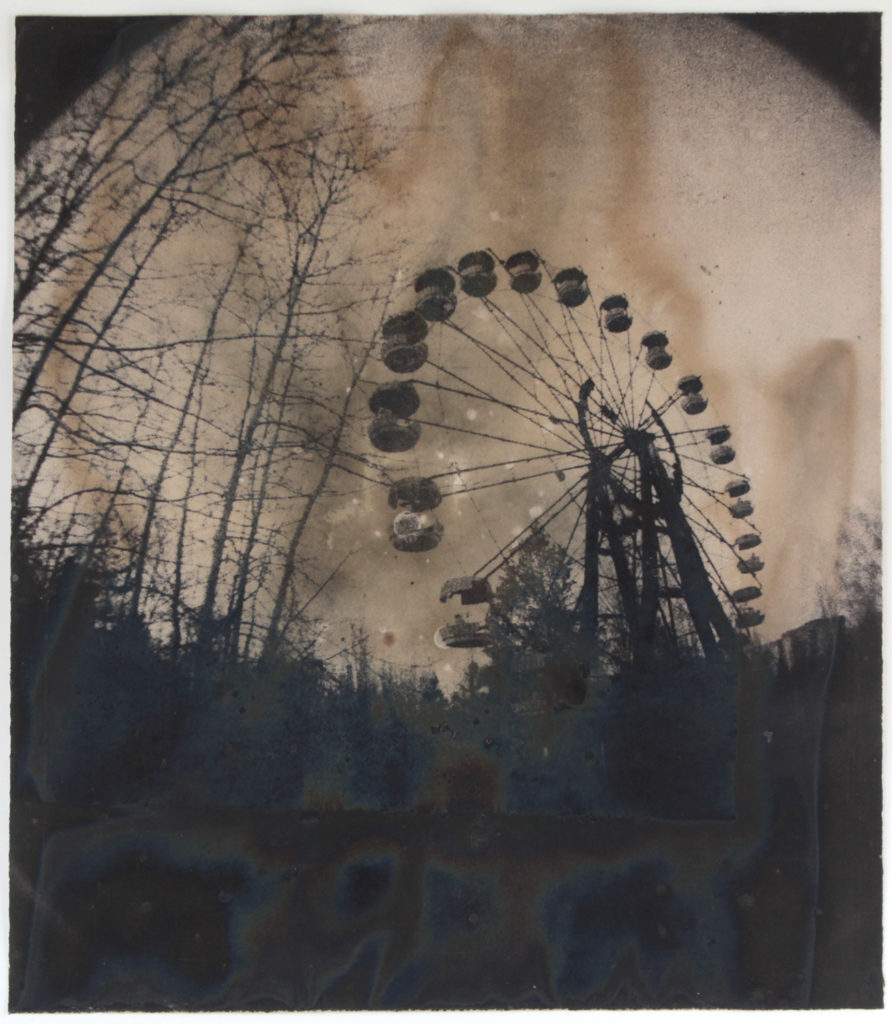
Images from nuclear plants
He took all the photographs for the series at locations impacted by the use of nuclear technology. His prints carry images from Chernobyl, Pripyat and Hiroshima. He tanned each print individually with tannic acid, because he wanted them to look like salvaged relics. They needed to look like trophies rescued from an exclusion zone, or dug up from the earth.
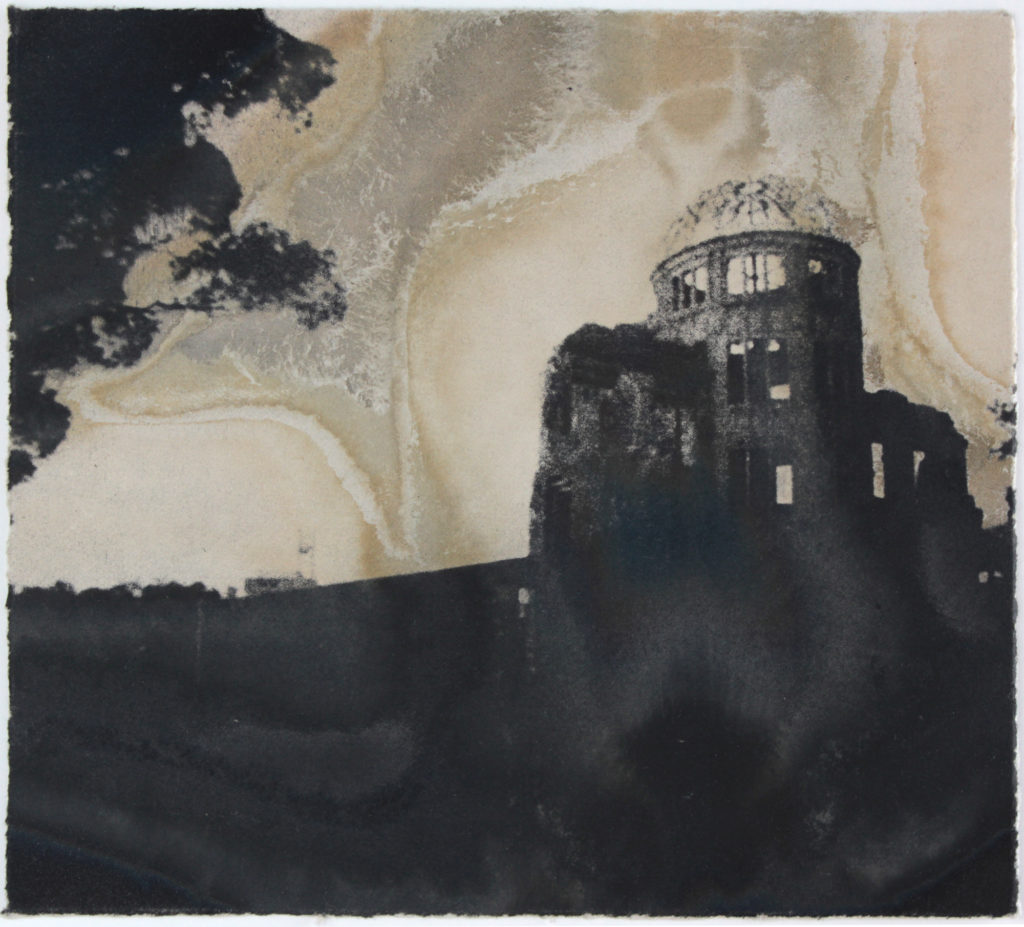
Roadside Picnic
Adam Hogarth’s research was directly influenced by an early 1970s science fiction novel “Roadside Picnic”, by the Russian Strugatsky Brother’s. According to this story, professional ‘stalkers’ would illegally salvage objects from an exclusion zone and resell them on the black market.
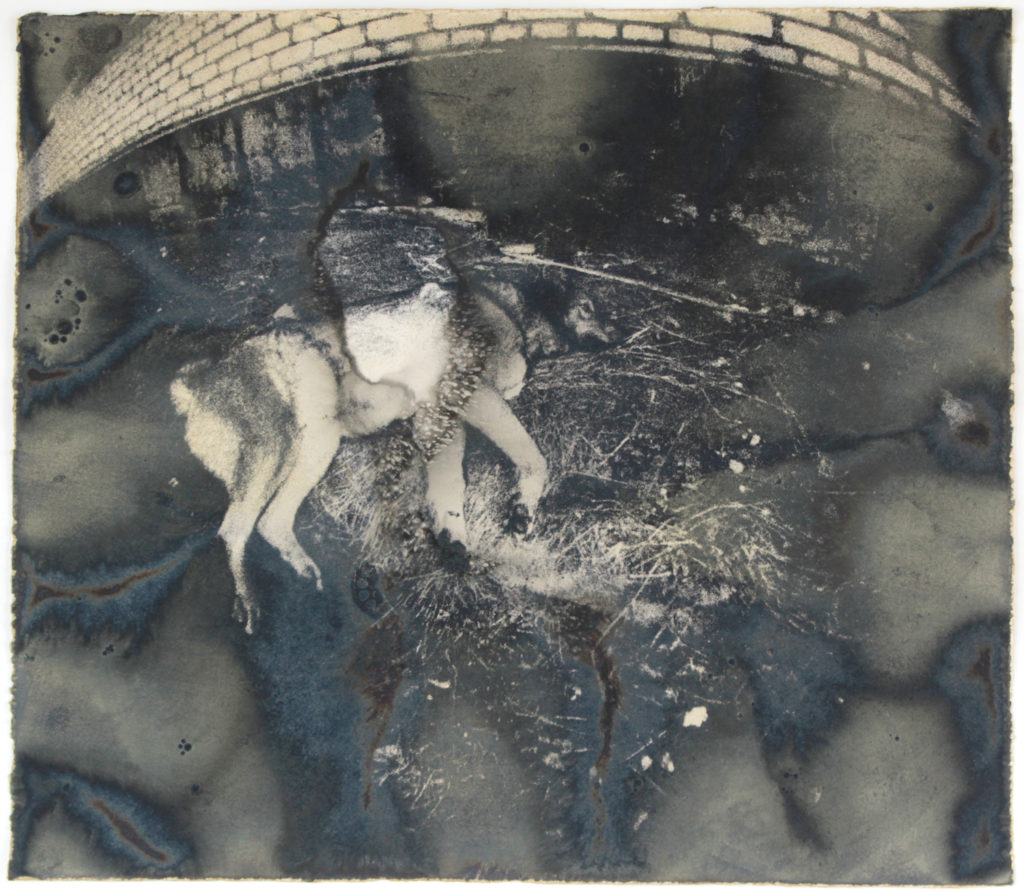
Stalker
The zones in the book came about through a series of alien invasions which left behind mysterious and powerful artifacts. These were highly sought after, but forbidden. Stalkers were the people who crept in to steal the powerful stuff. The Soviet film director Andrei Tarkovsky subsequently made a version of the book into a film ‘Stalker’ in 1979.
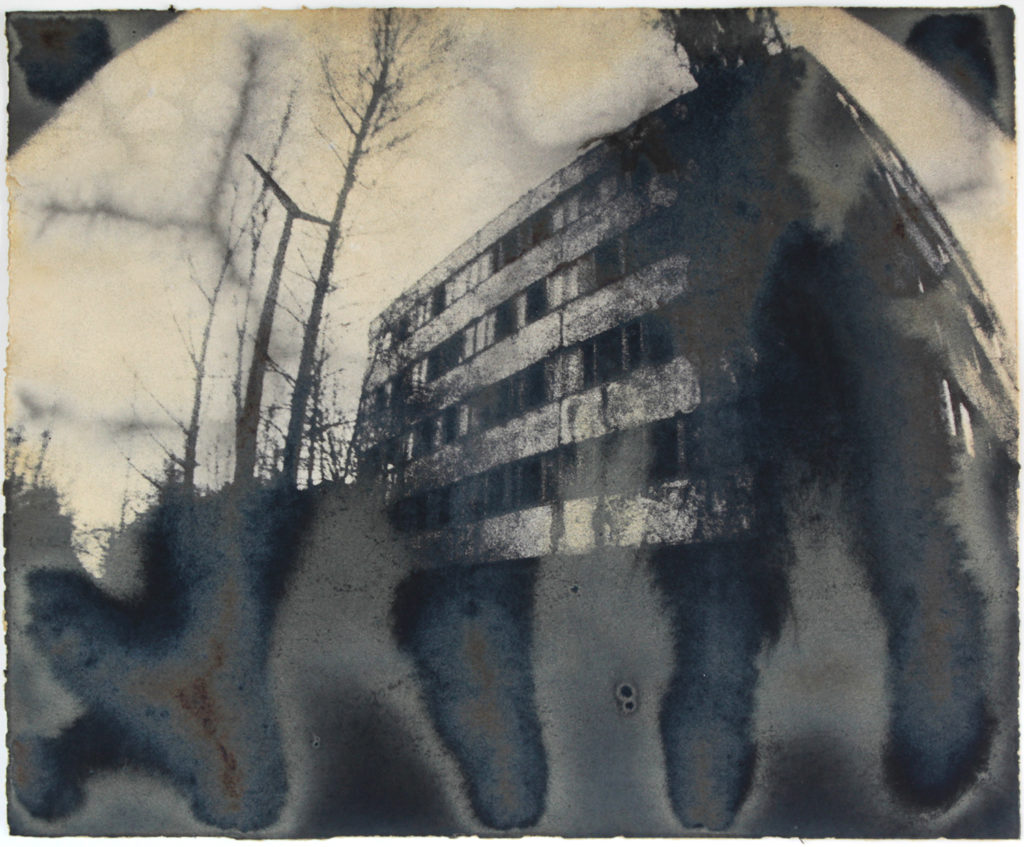
Both the book and film predated the nuclear disaster at Chernobyl, but people have noticed how it nevertheless prefigured it in many ways. Adam’s own analogy indeed, is with nuclear exclusion zones. He is continuing his research with future trips to Sellafield, Blackwater Estuary (both sites of decommissioned nuclear power plants) and Foulness Island, UK. Eventually he will provide a richer ritual context for the print series in the form of performance and installation.
Flower sculptures
This was a series of works he began in 2014. For Adam, the message has always been as important as the process of making. And he often makes it double-edged. His living flower sculptures are both joyful and serious, related to memory and funeral arts. The statements are both cryptic and formal. He snatches phrases from varied sources, such as social media or memorial contexts.
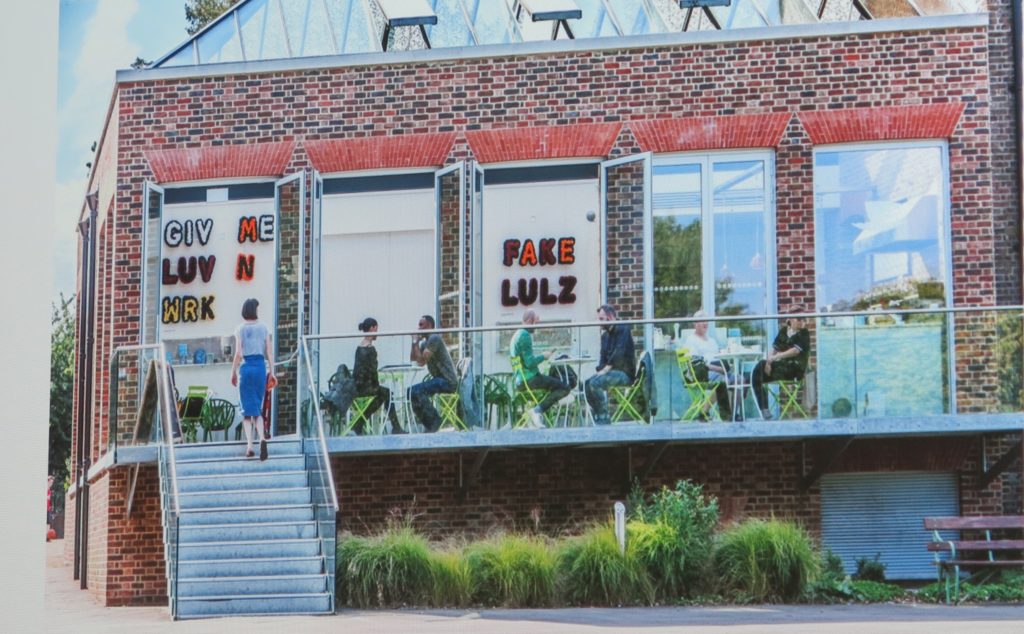
While overall they are about life and death, and impermanence, the flower works touch on other specific themes. At the William Morris Gallery in 2015, he made the work about new phrases from social media creeping into the language.
Impermanence and memory
Over time the flowers die, highlighting the temporary nature of life. Adam likes the process of change, in that the viewer never sees the works the same way twice.
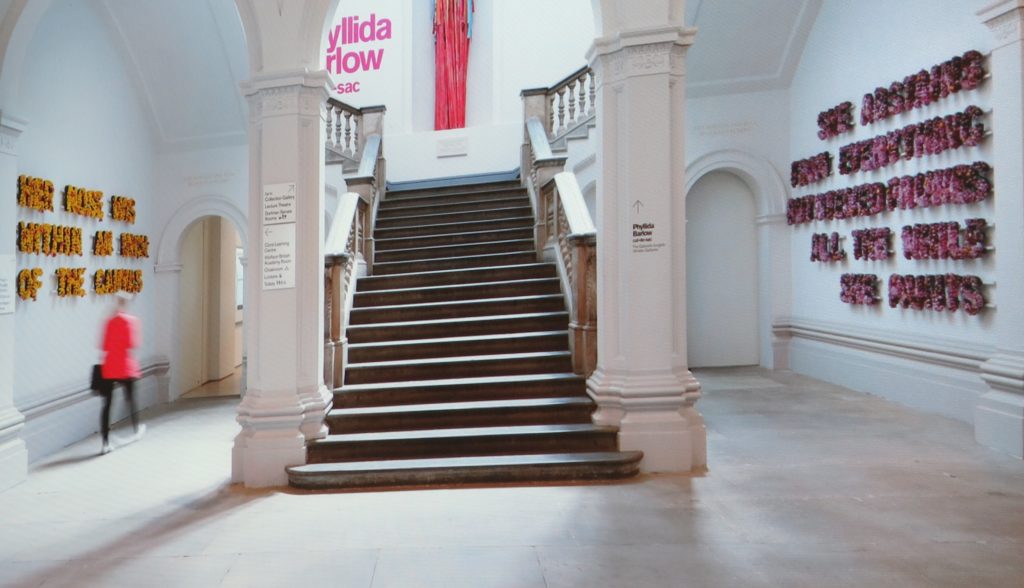
One work touched more specifically on life after death . He created the RA installation Spring and Summer in 2019, (above) as a memorial to an early Royal Academician, May Moser (1744-1819). He chose eccentric phrases from the archives which brought out some of the rigour of May’s work ethic. They are also playful. ‘She abstains from everything except stewed prunes all the while she paints‘ is both an incidental remark, but central to understanding her practice.
These works teeter on the edges between ephemera and deep seriousness. They also link the symbolism of the flowers with their purpose.
About the artist
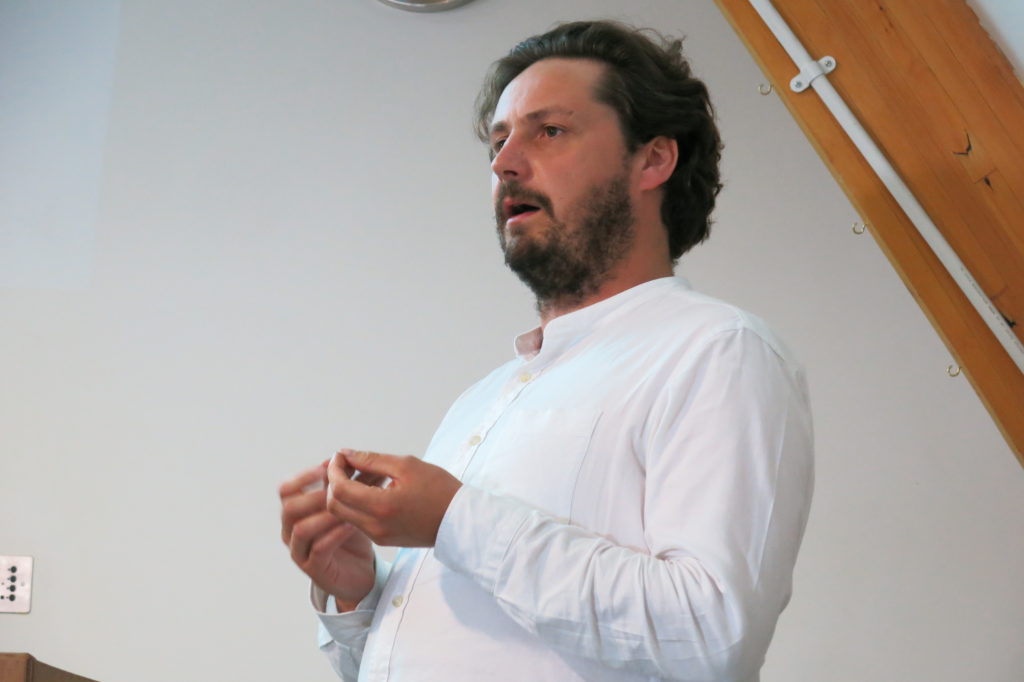
Adam Hogarth lives and works in London, UK. He completed a BA Hons in Fine Art, Northumbria University and an MFA in Fine Art Printmaking, The Royal College of Art. Since 2016 he has been the printmaking fellow at The Royal Academy of Arts. His technical expertise has also made him head screen-printer at Thames-side print studio.
He has exhibited nationally including the ICA, Tate Britain, The Royal Academy of Arts, The William Morris Gallery. Internationally he has shown at Kobe Sans University (Japan) and the Finland Print Triennale.

